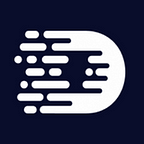Metrics for innovations: how old are you, startup?
Nowadays, any business tries to use a data-driven approach and be SMART in the decision-making process. Obviously, we try to measure everything and innovation development is no exception. Measuring innovation progress can be challenging because of the changing context of environment and multidimensional factors of success. That’s why the first metrics for underlining the context should be technology readiness level (TRL).
The TRL system was initially developed by NASA in the 1970s to evaluate the readiness of technologies for space missions. Since then, the TRL system has been widely adopted by other organizations, including the European Space Agency and the US Department of Defense.
The TRL system uses a scale from 1 to 9 to assess the maturity of a technology:
1- Basic principles observed
2 — Technology concept formulated
3 — Experimental proof of concept
4 — Technology validated in lab
5 — Technology validated in relevant environment (e.g. simulated space environment)
6 — Technology demonstrated in relevant environment (e.g. simulated space environment)
7 — Technology demonstrated in operational environment
8 — Technology complete and qualified
9 — Actual system proven in operational environment
At each level, the technology is evaluated based on its readiness to move to the next level. The higher the TRL, the more mature the technology is considered to be, and the closer it is to being ready for commercialization or operational use.
In DeTech.World we obtain TRL for evaluation maturity of the technology and match the project roadmap with the current state of technology development. Our TRL scale looks the following:
1 — Idea
2 — Basic Research
3 — Applied (Lab) Research
4 — Proof of Concept (Prototype)
5 — Sub-system Prototype
6 — Alpha Prototype
7 — Beta prototype
8 — Batch production
9 — Mass production
Such adoption allows us to be flexible in Lean Startup fashion and use continuous improvement approaches based on feedback. On the other hand, we provide a clear understanding of the desired outcomes and risks from investment perspectives. All grades from 1 to 7 are about the early stage of technology development and have a higher probability of failure and it requires a higher risk tolerance to make investment decisions. In any case it takes time to prove an idea and hard work to go to mass production.
